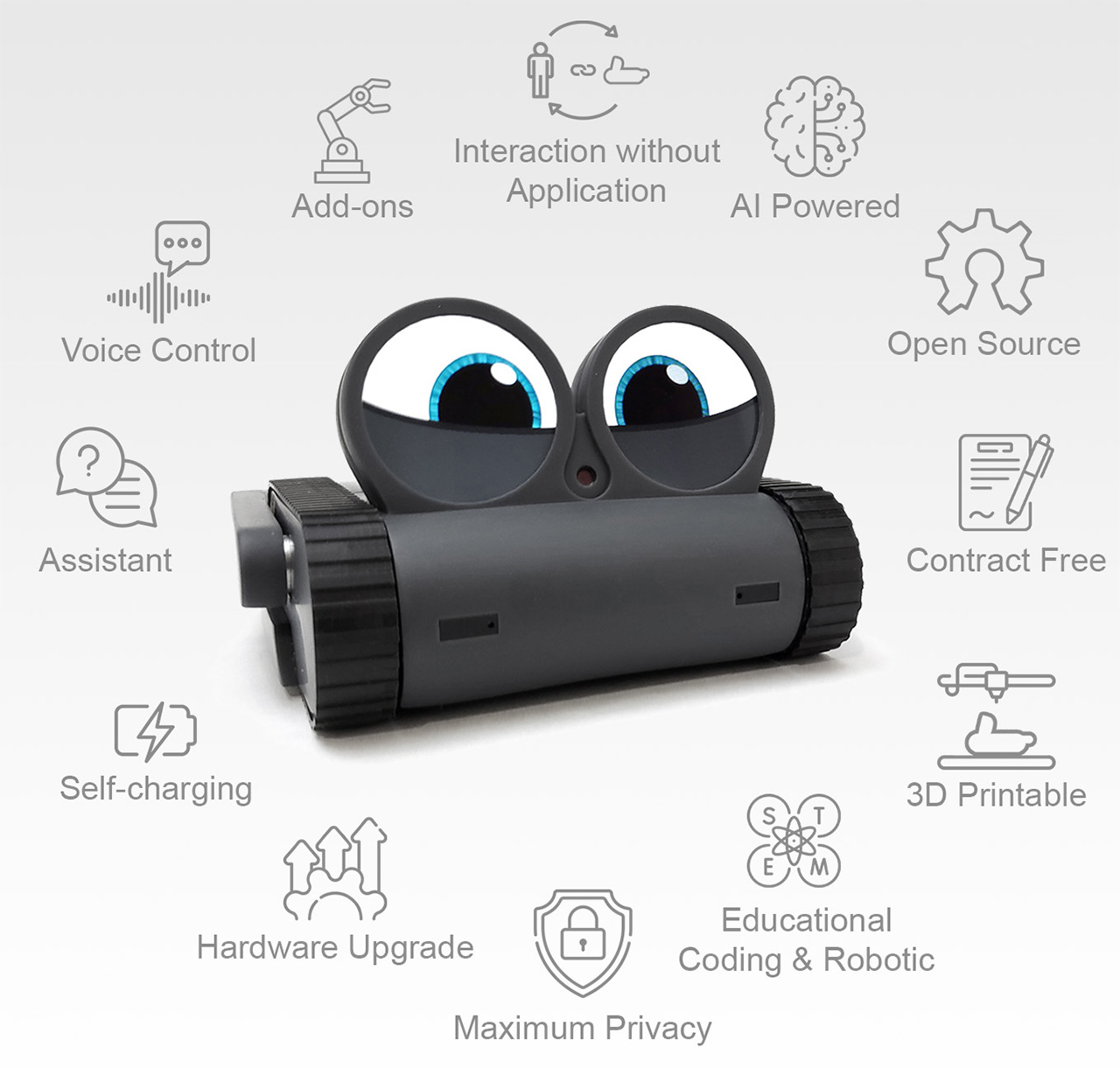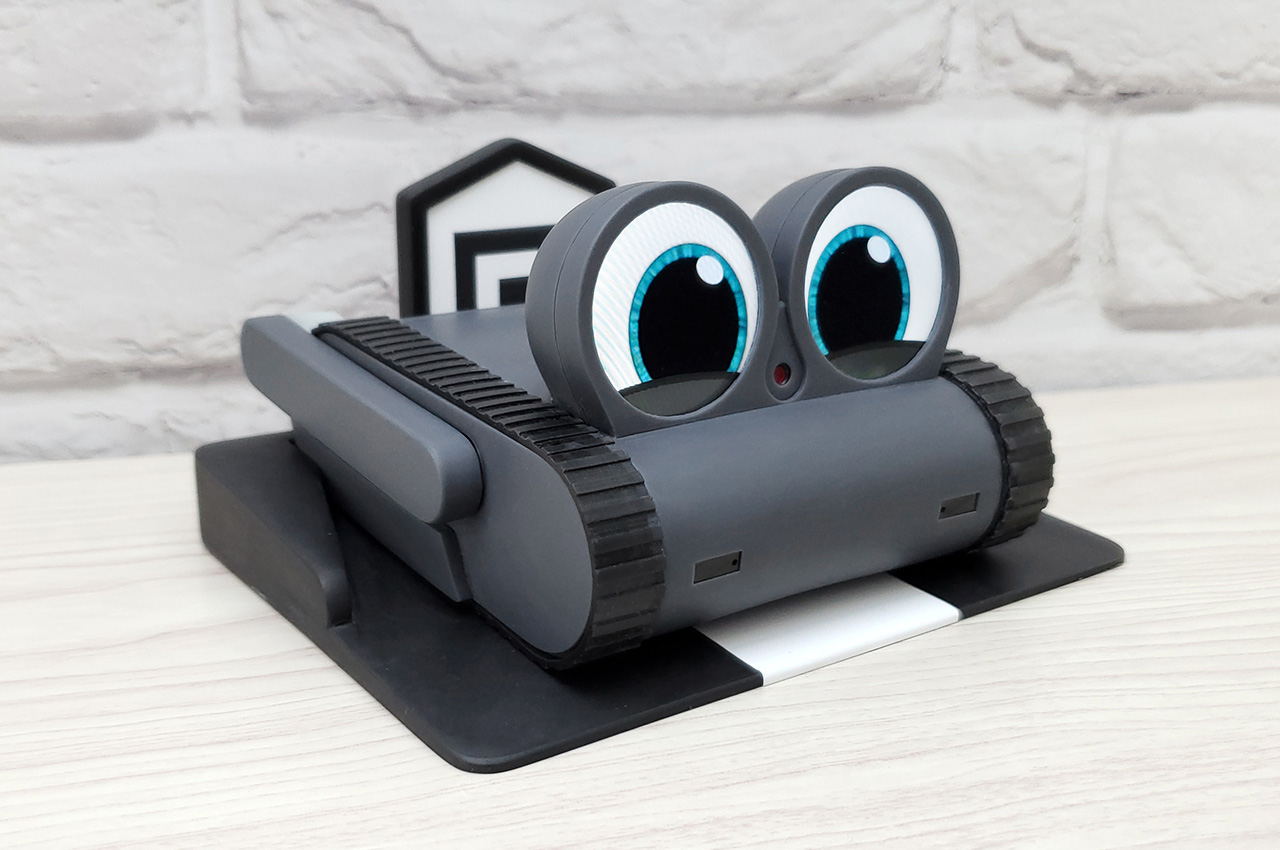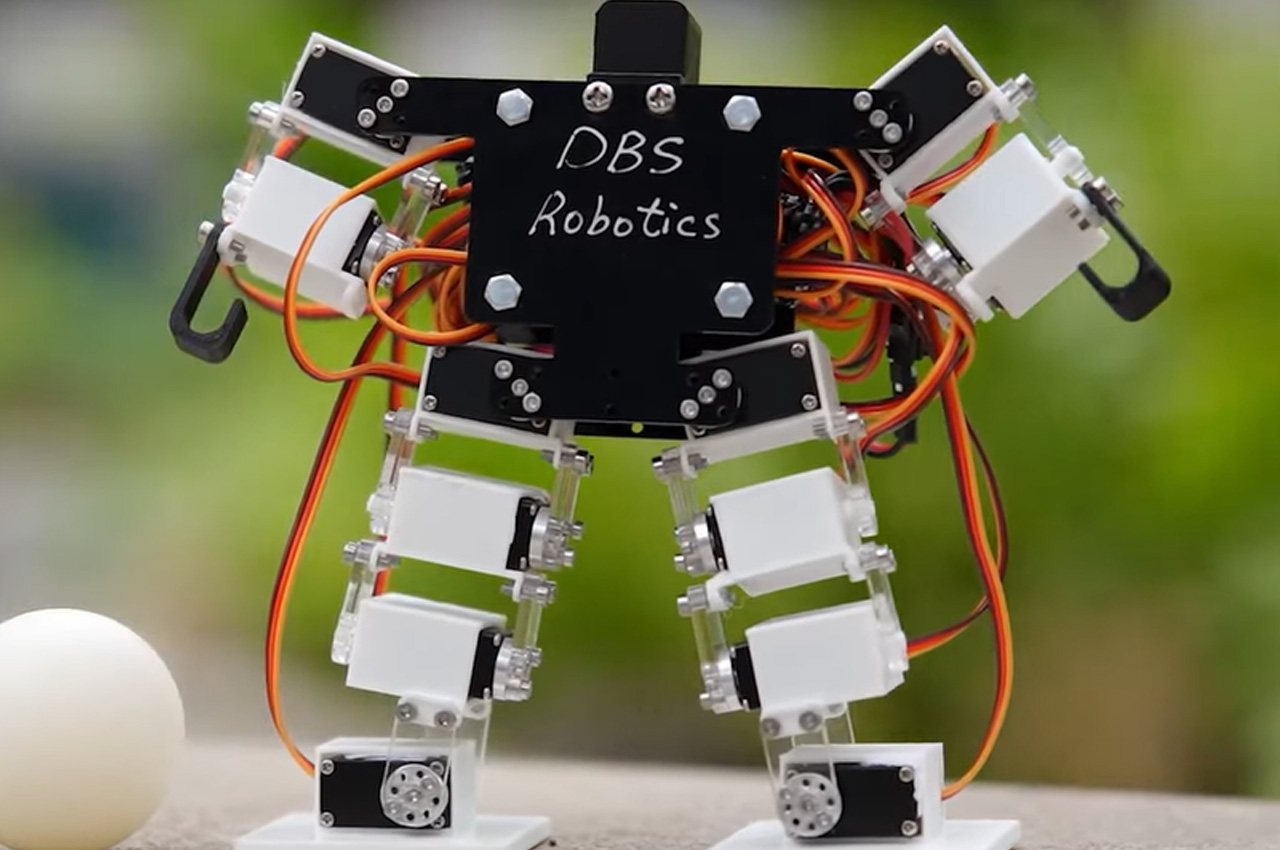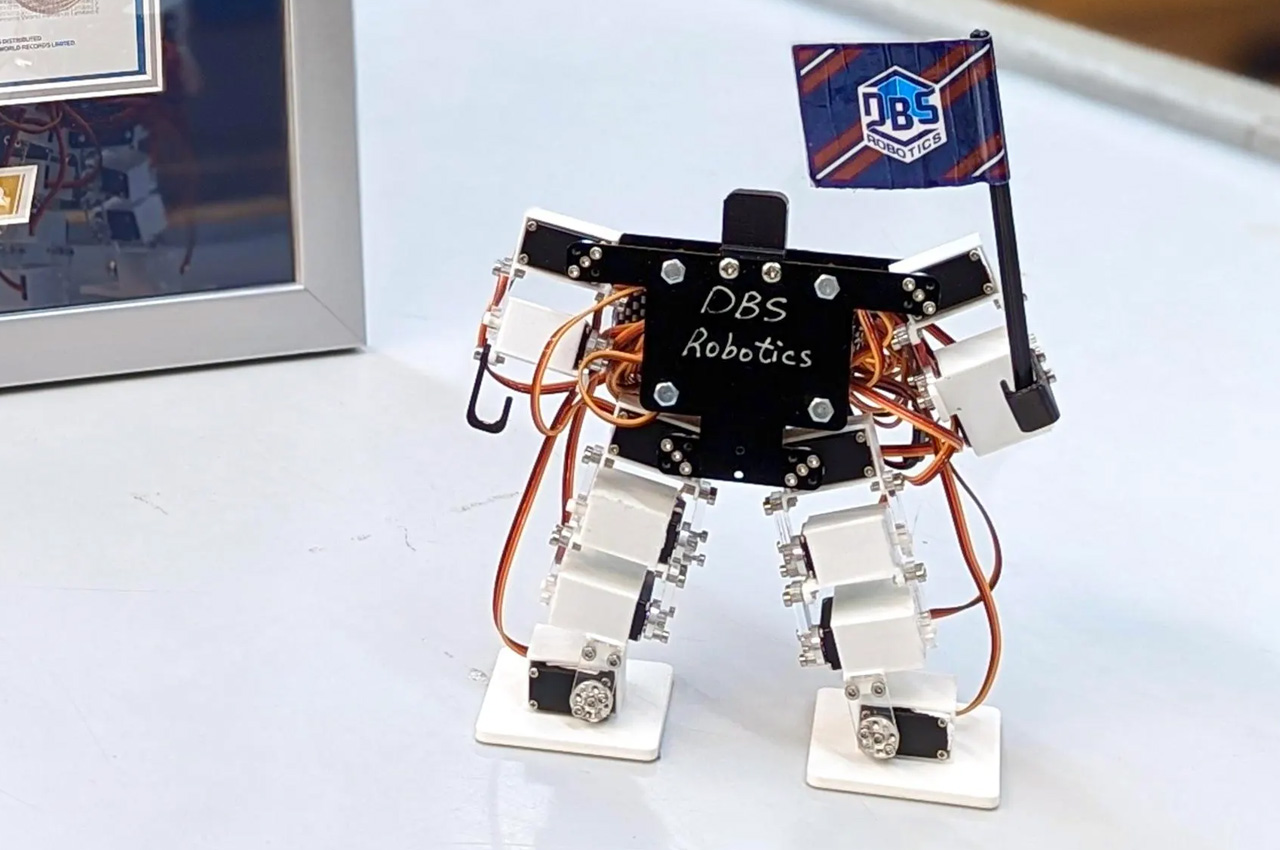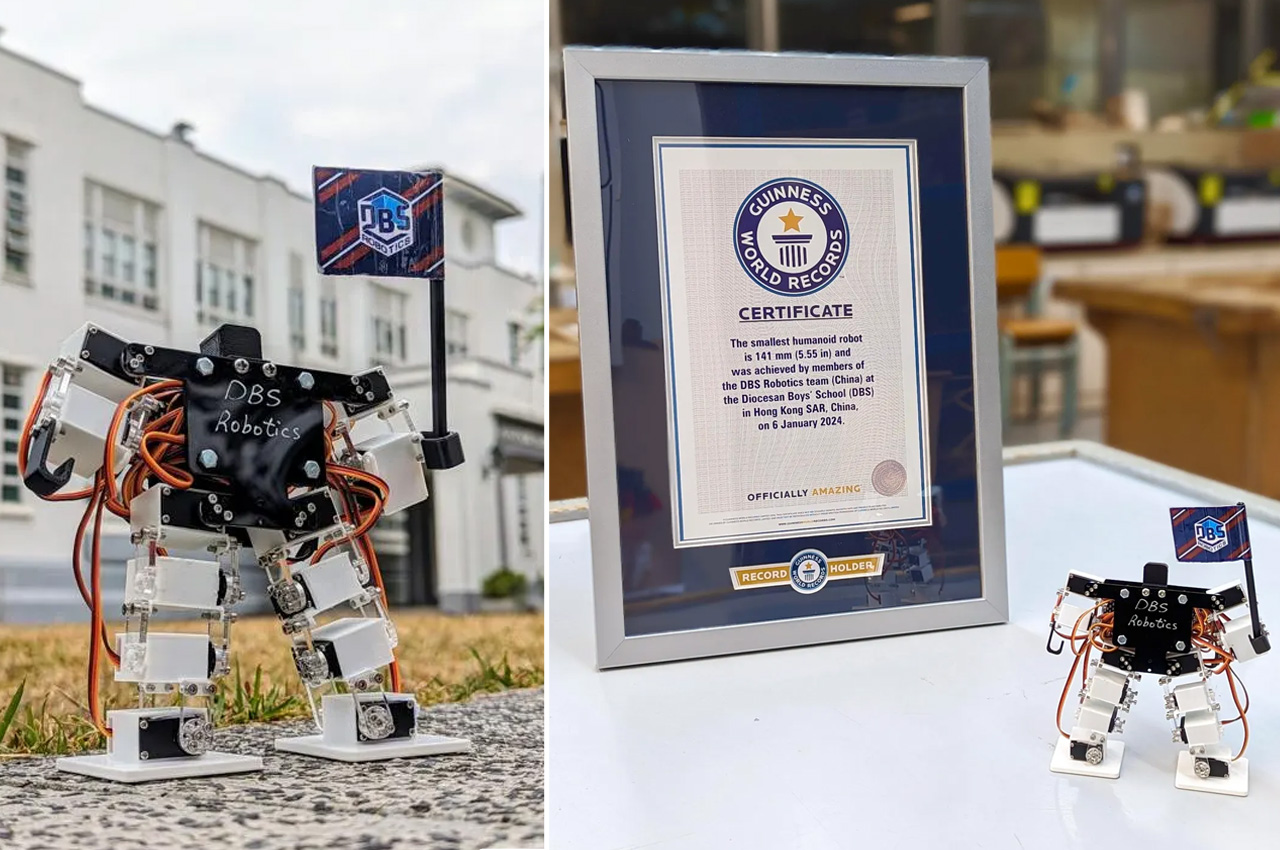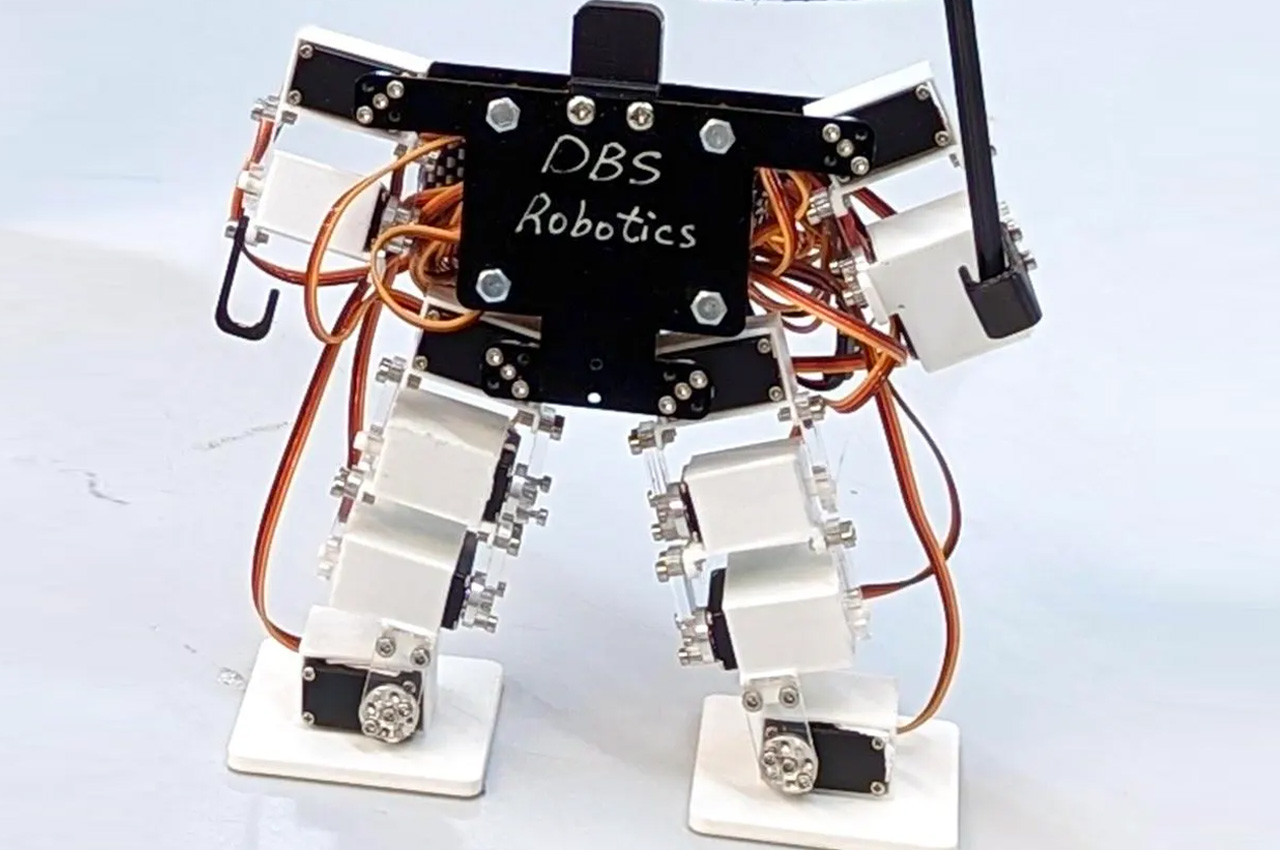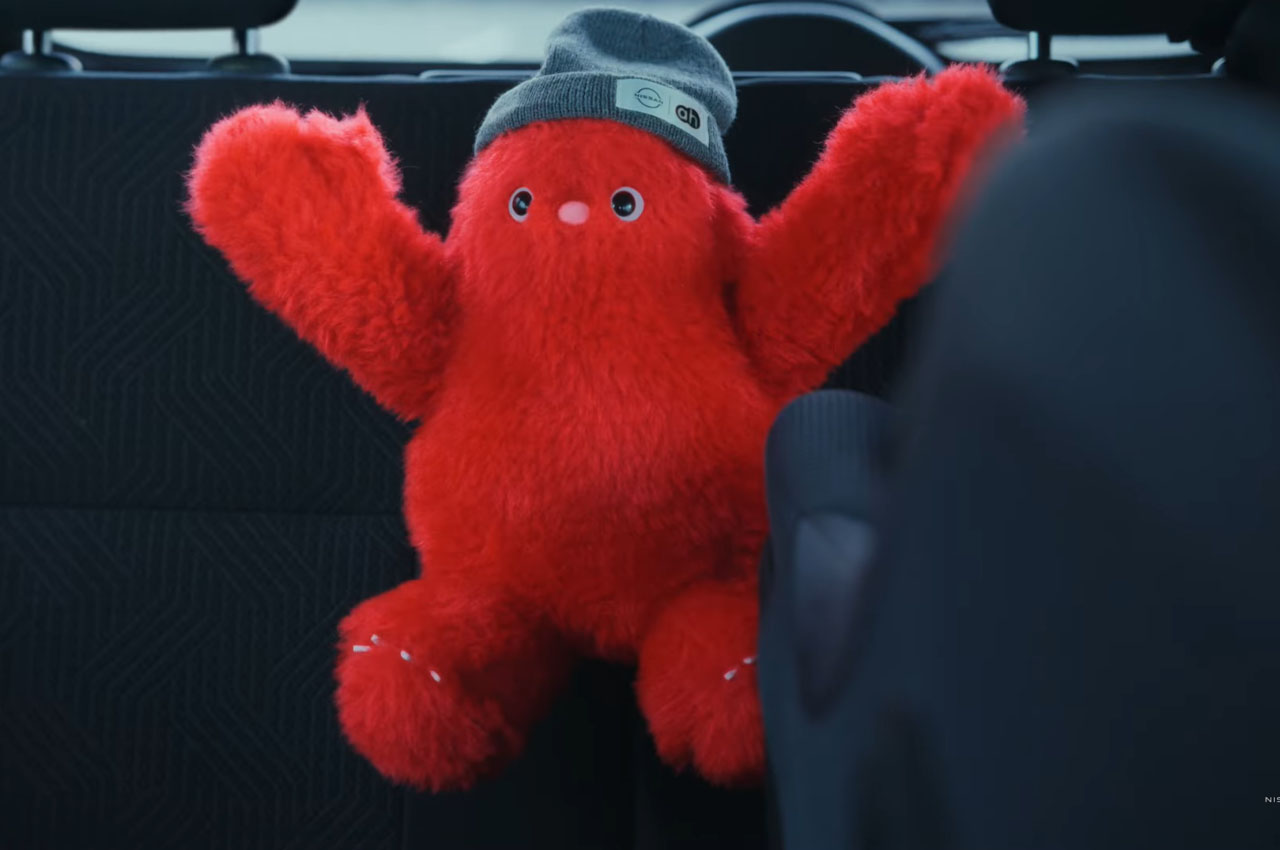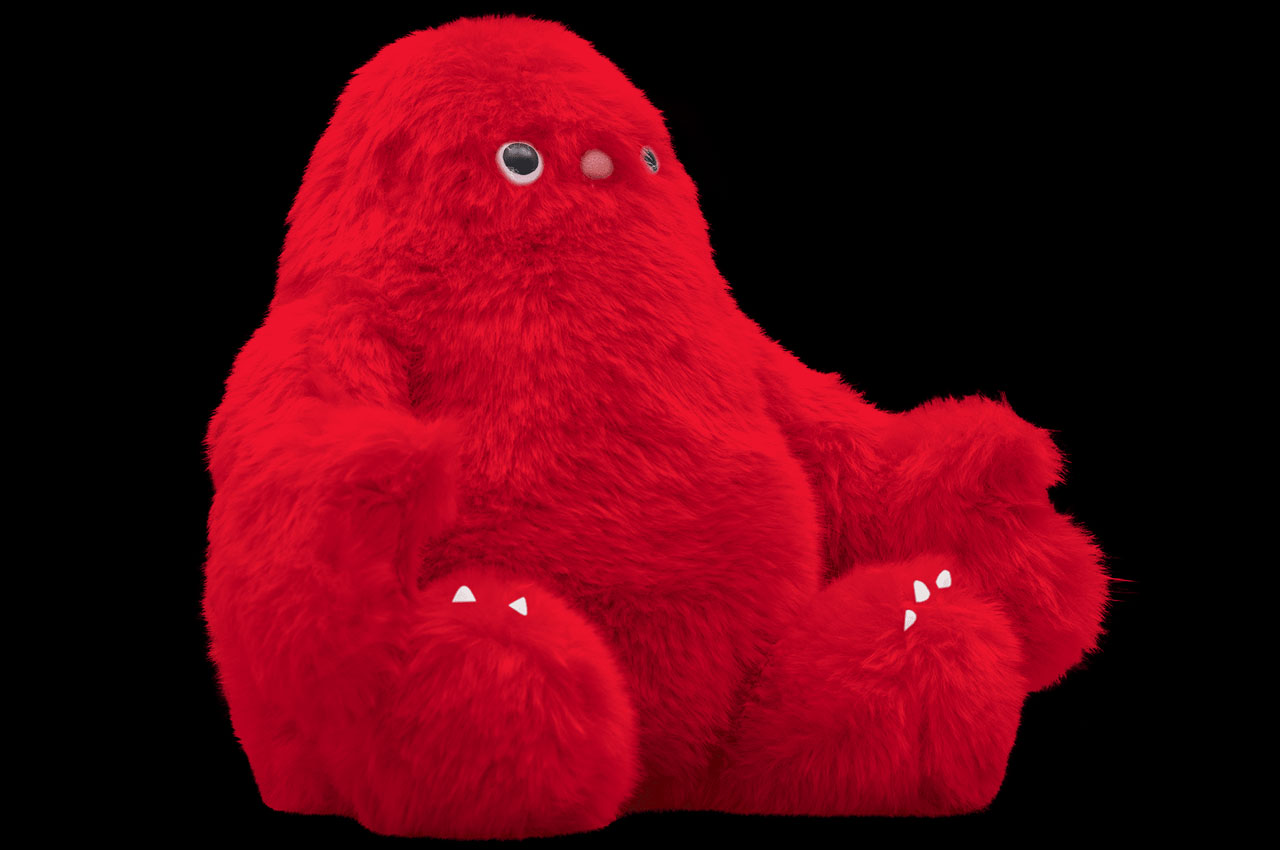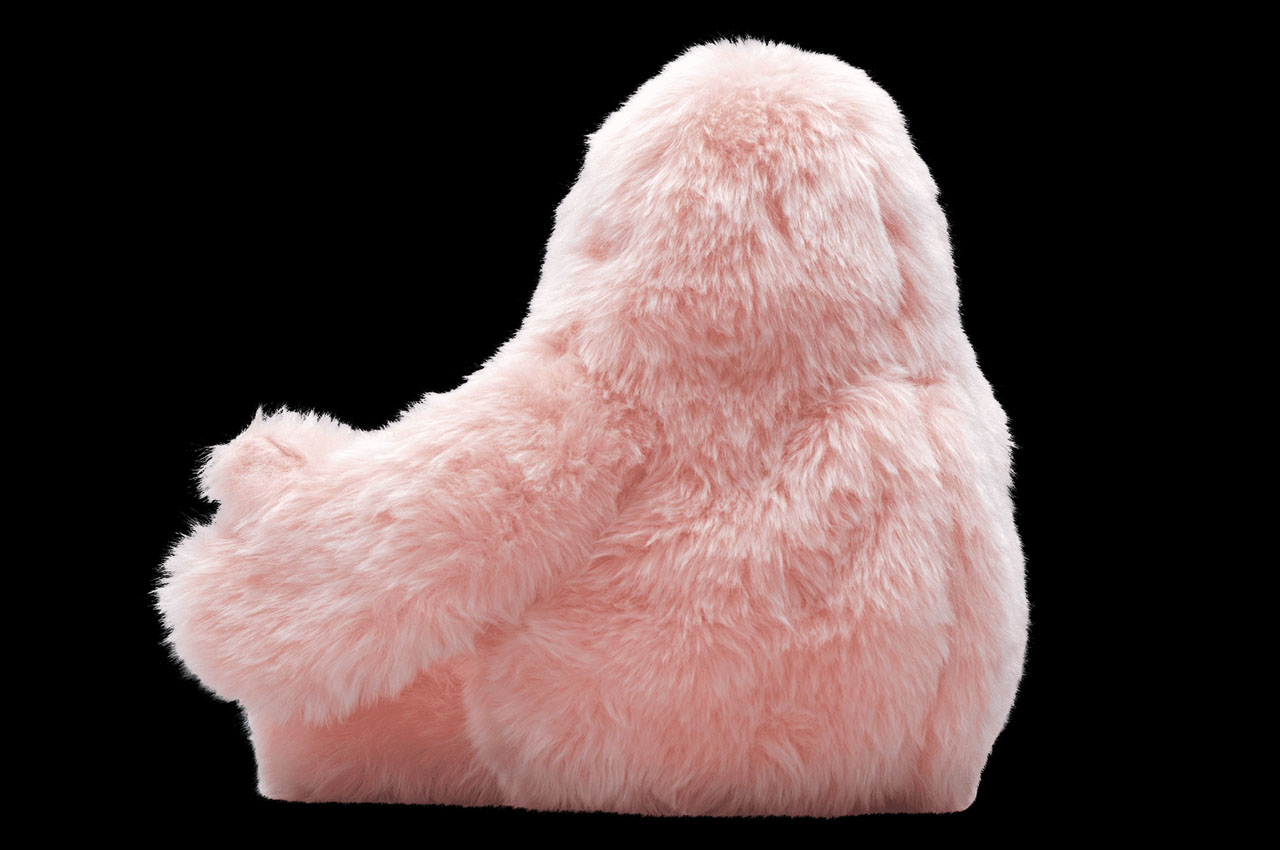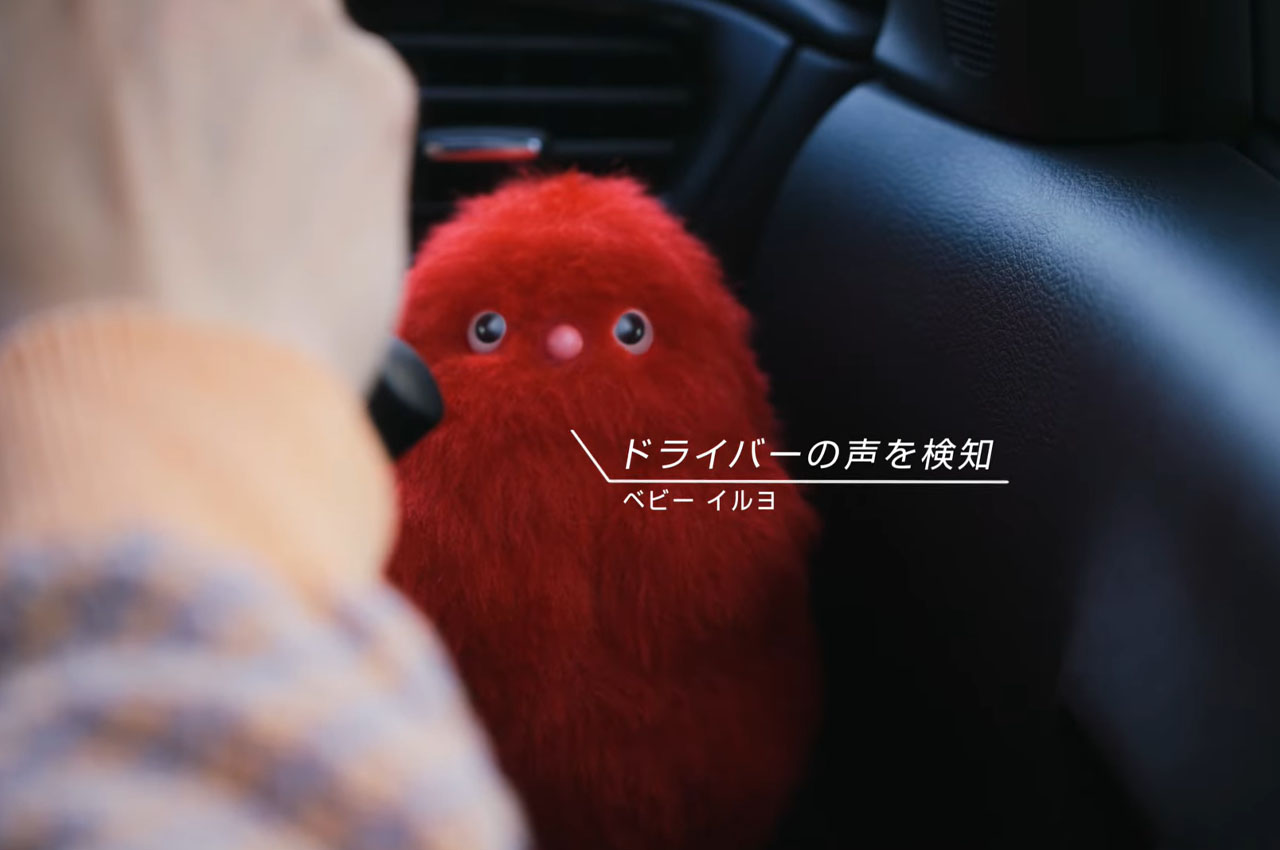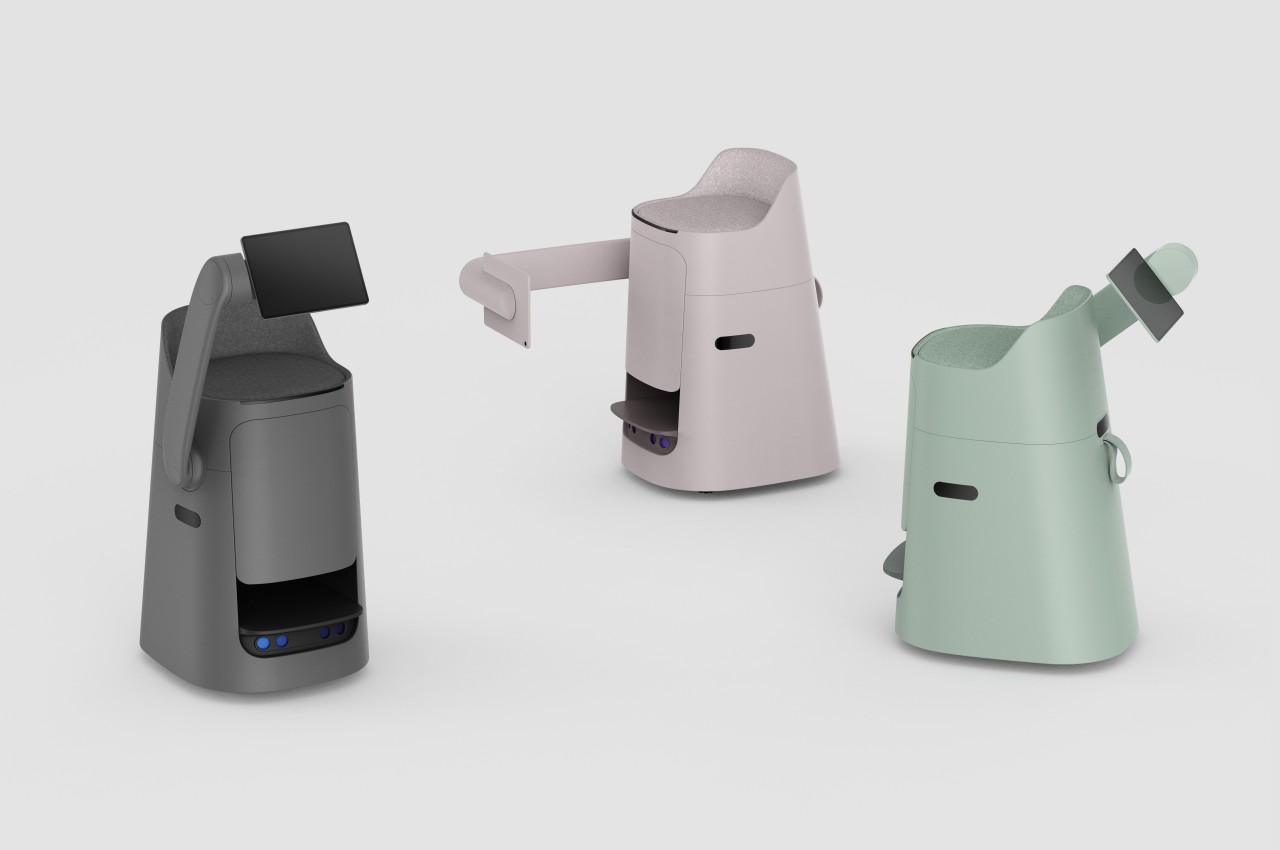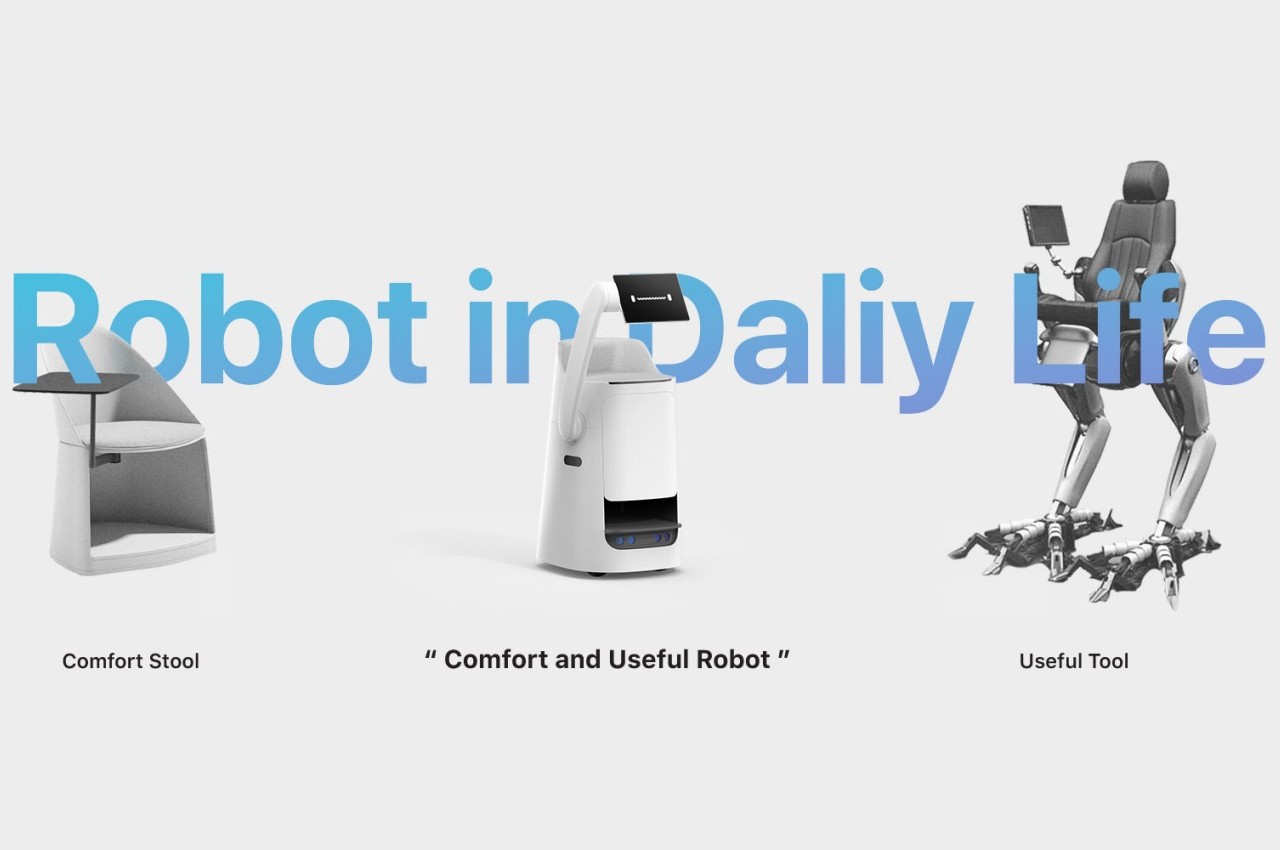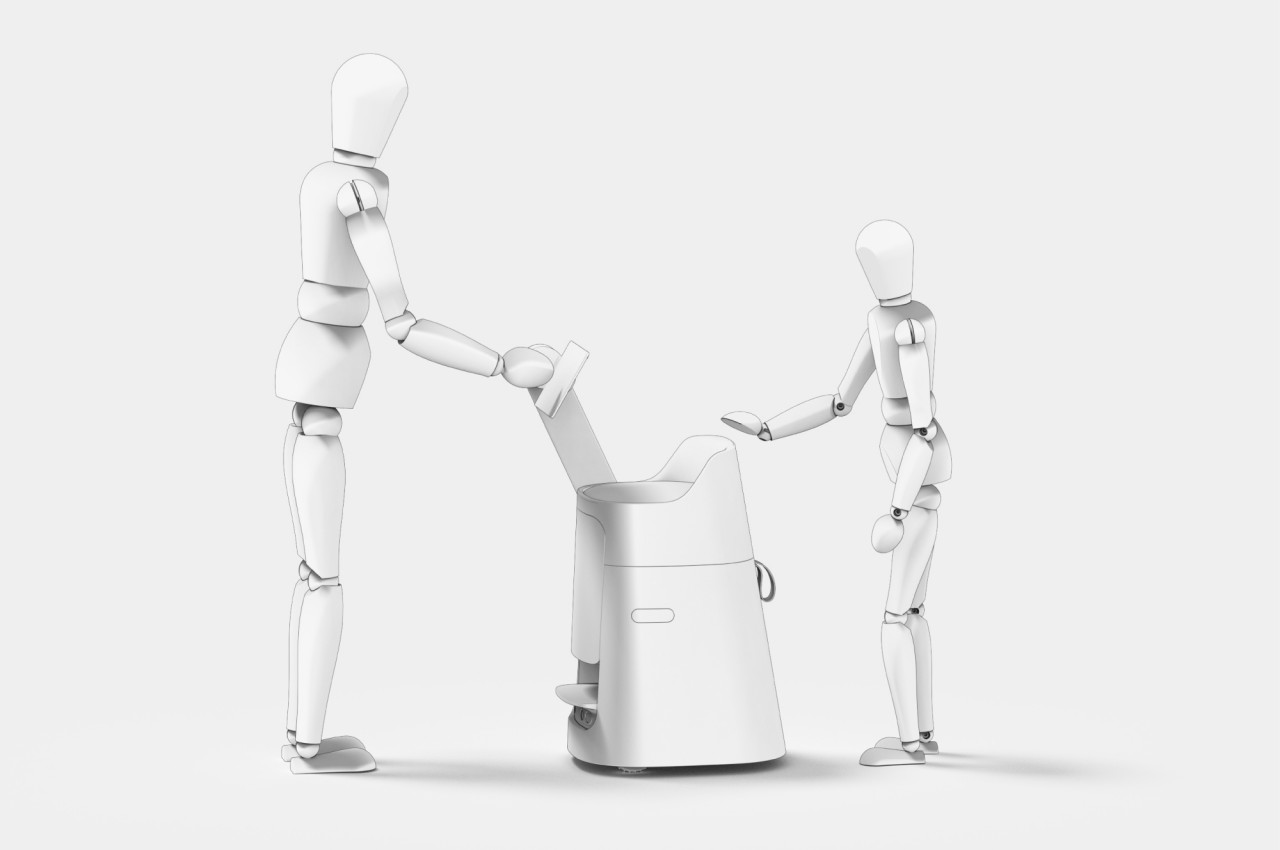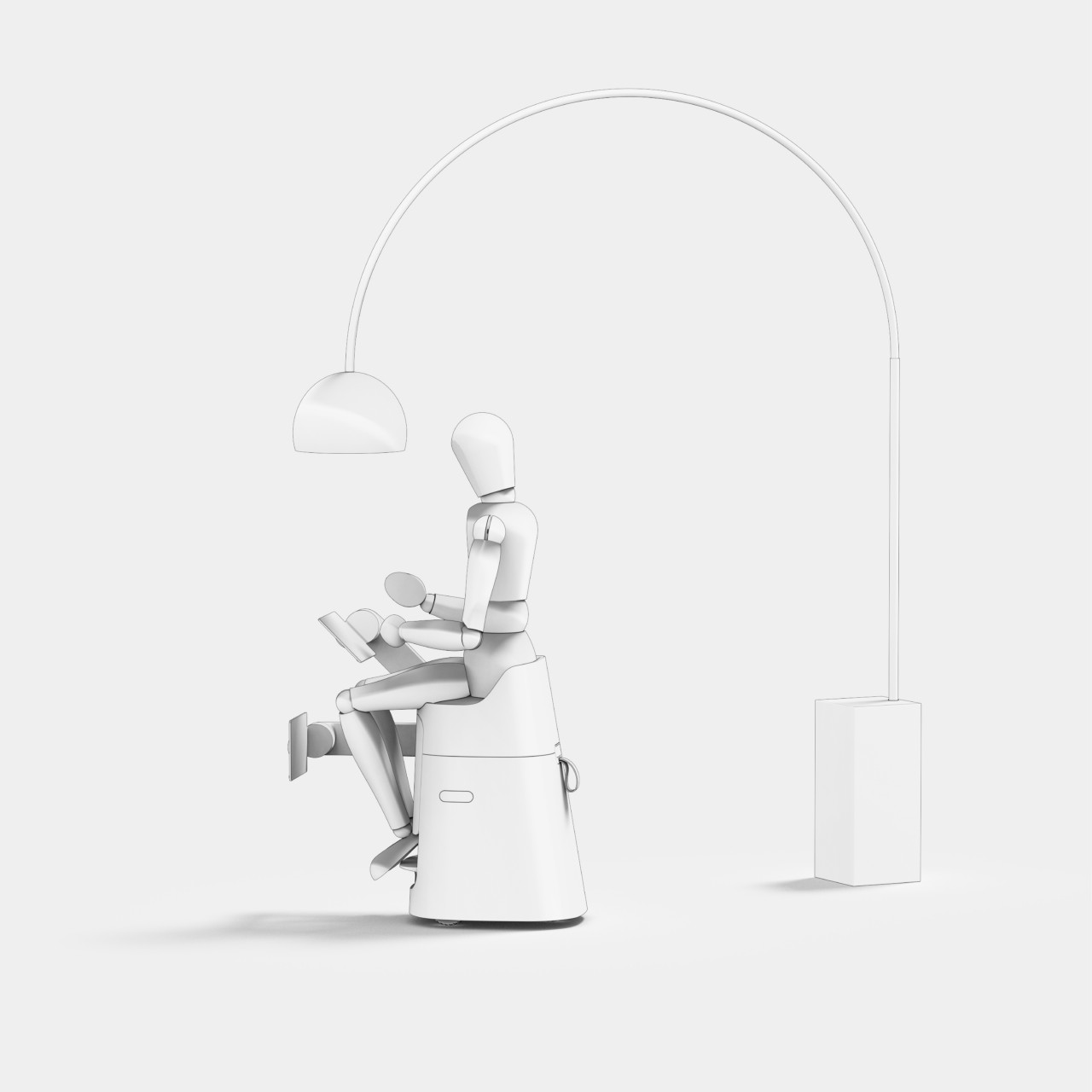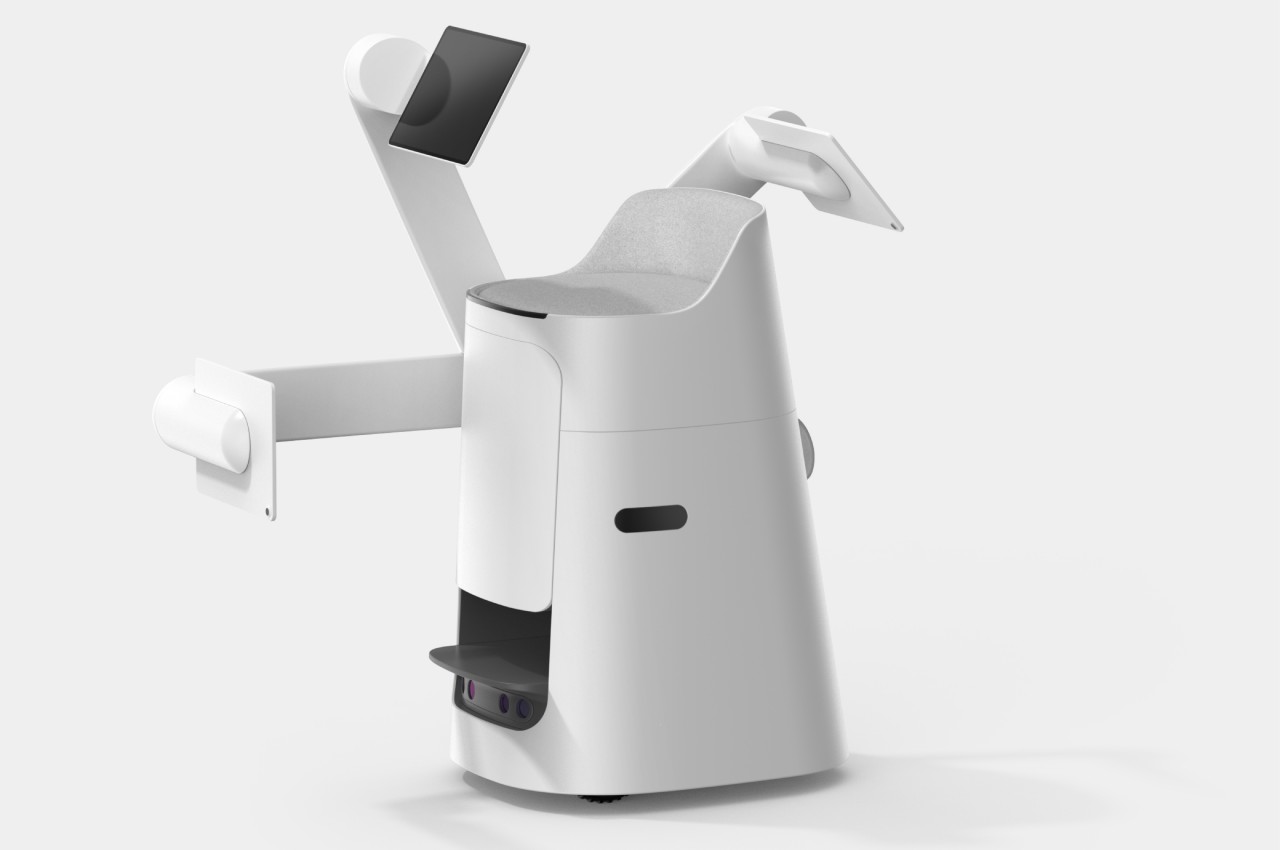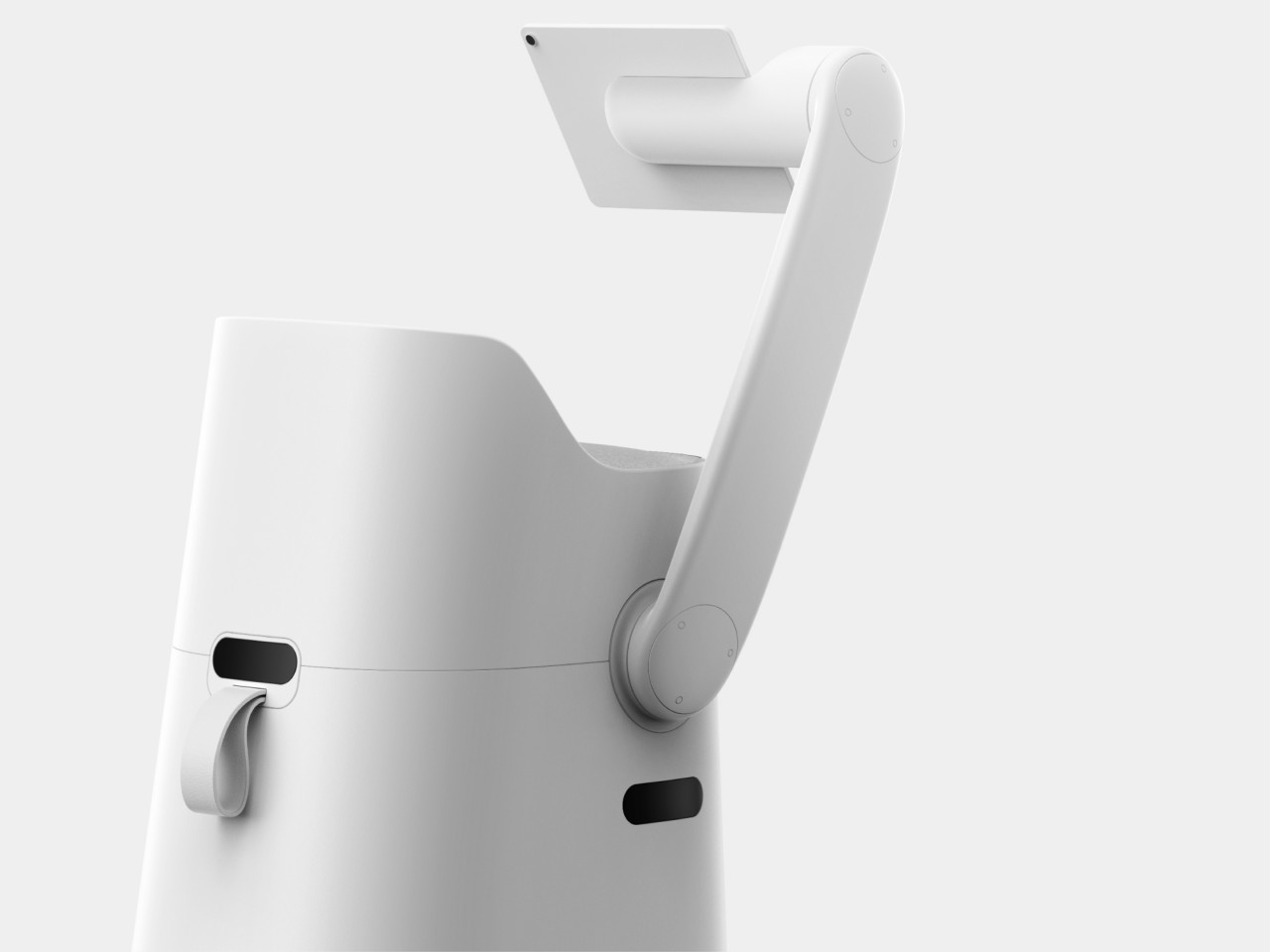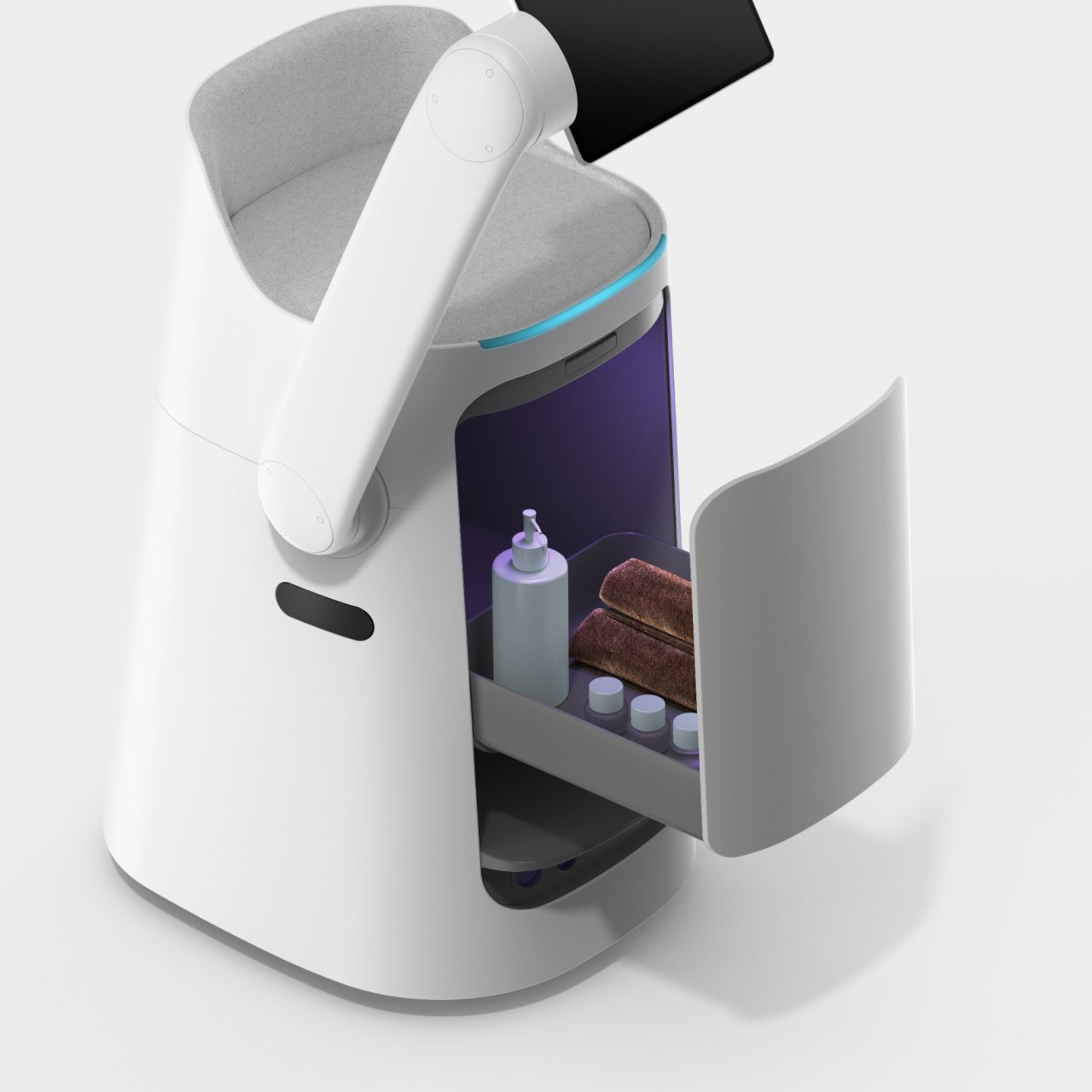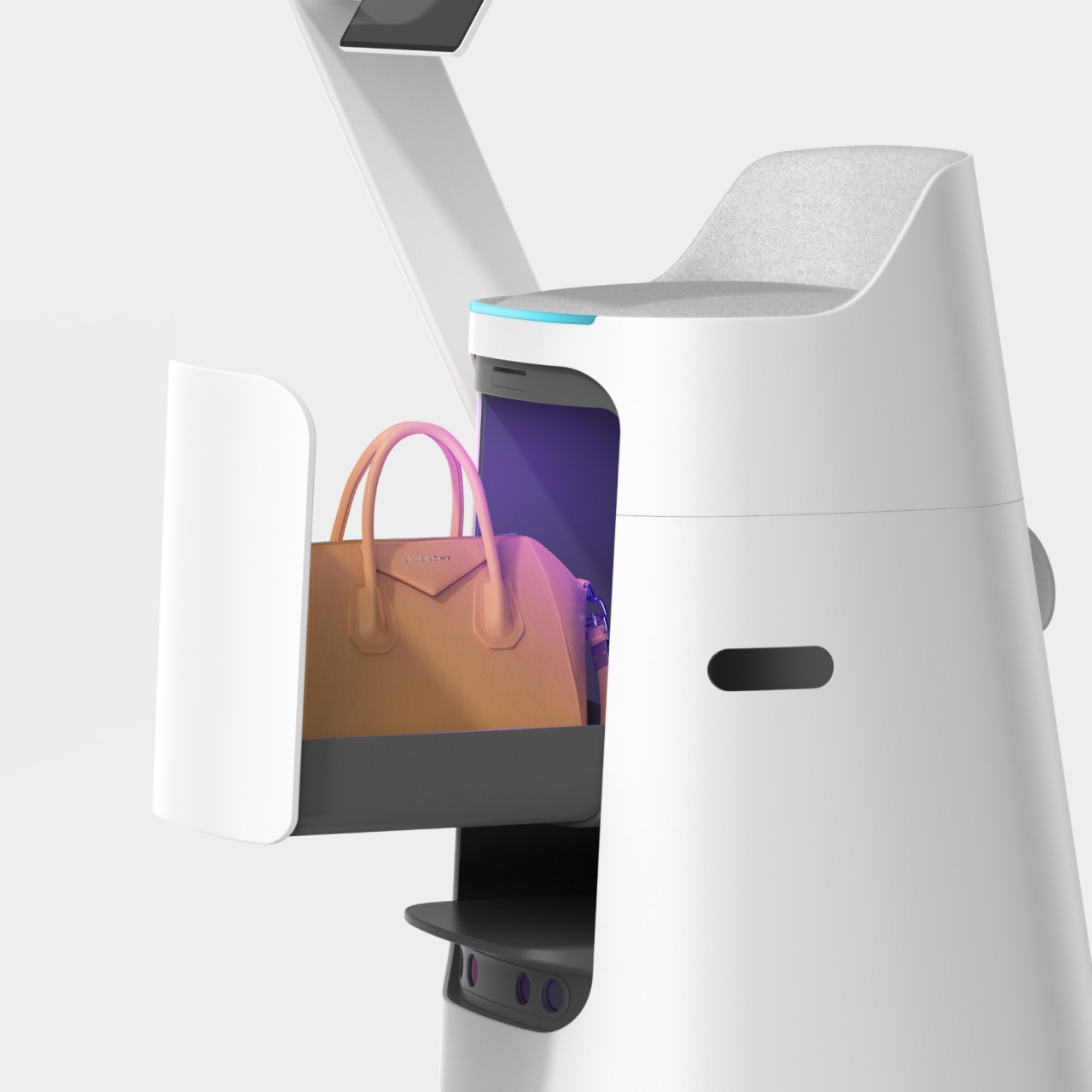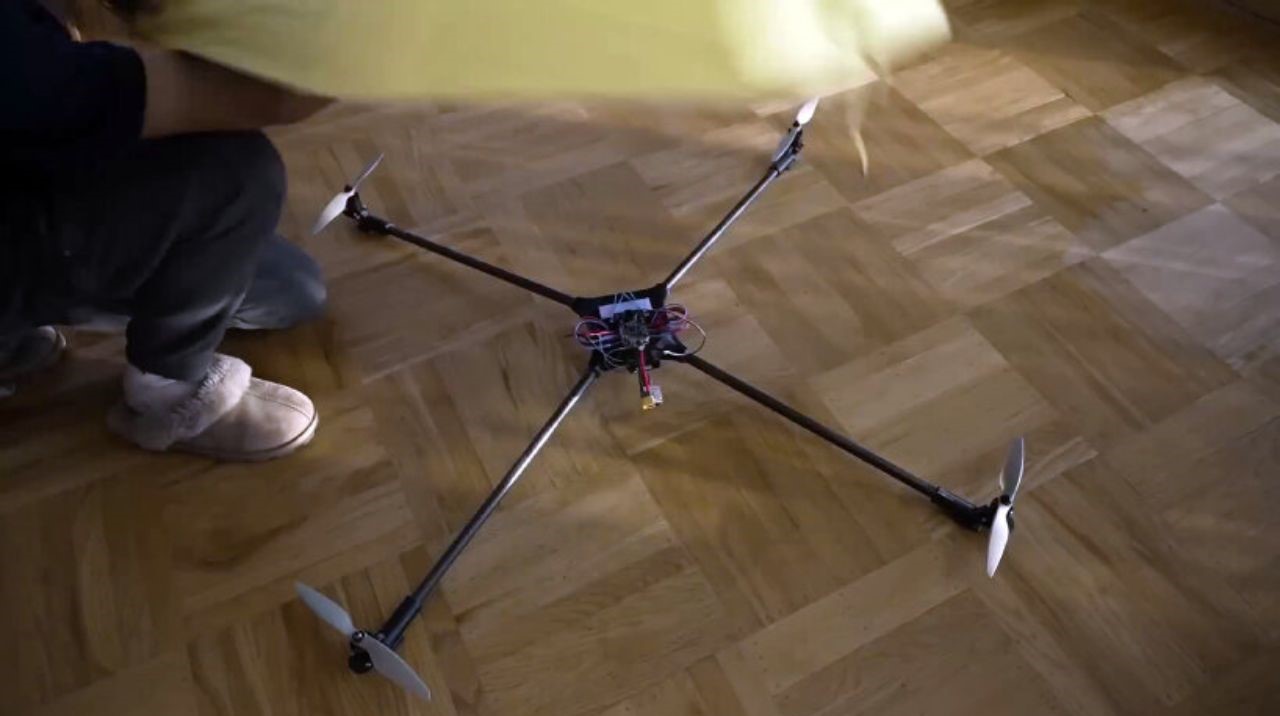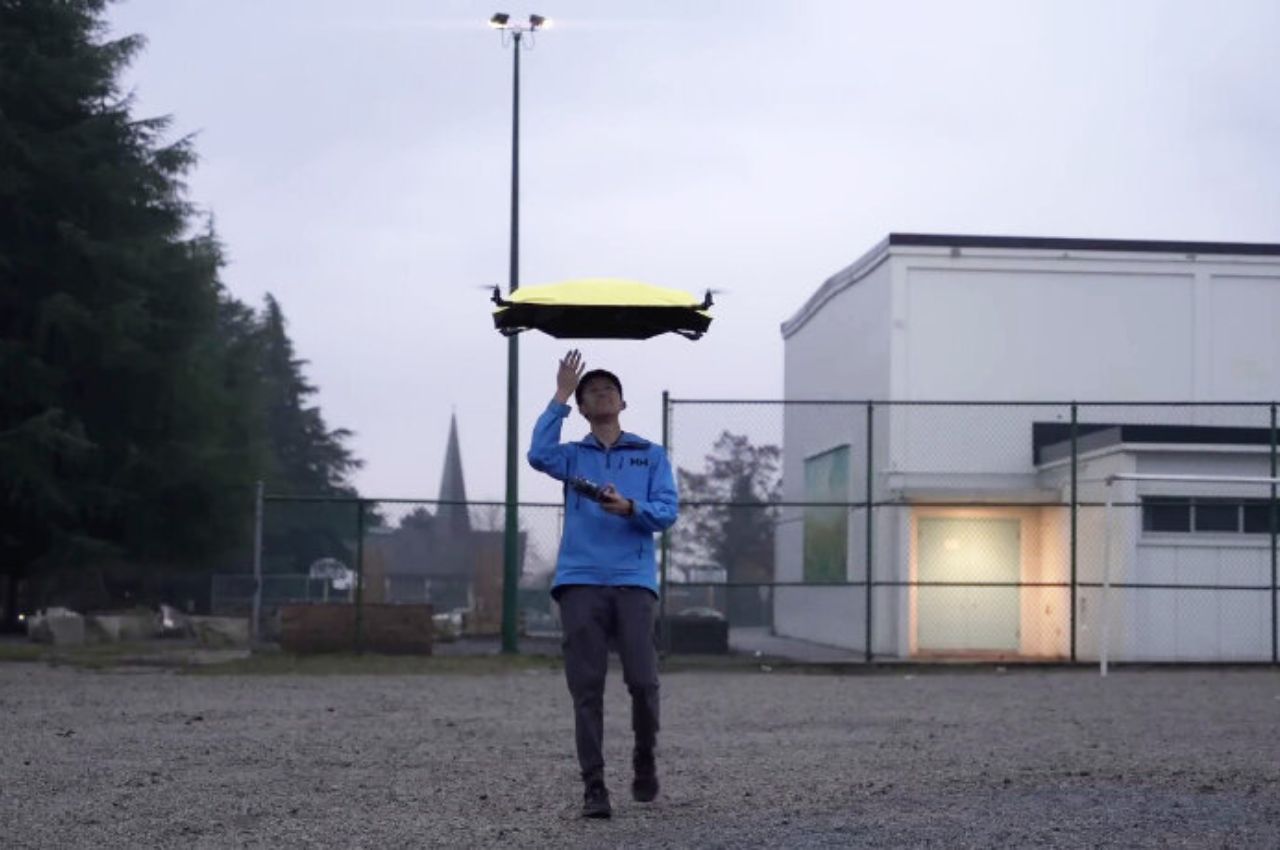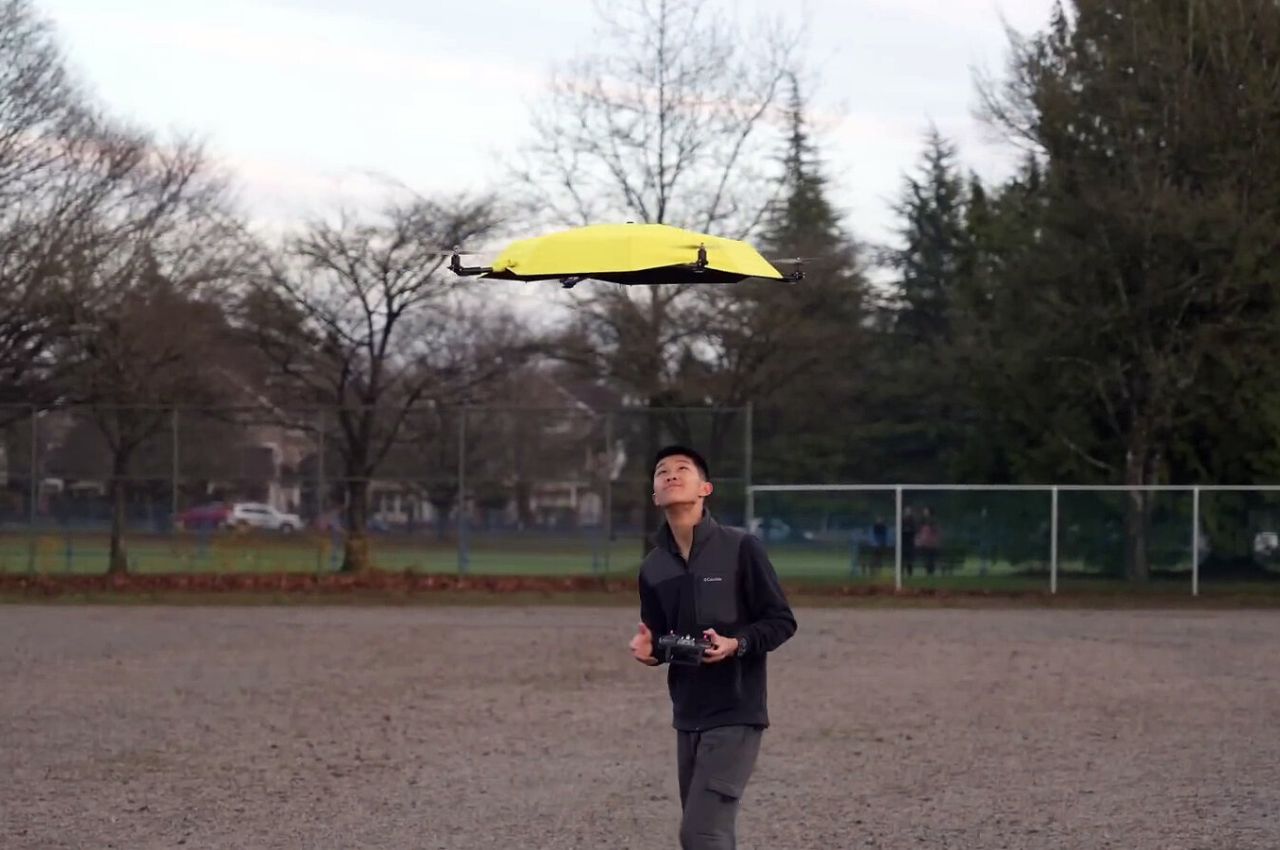If we’re going to give in to our eventual robot overlords, my only hope is that they’re as adorable-looking as Doly.
With its googly eyes and treadmill-operated motion system, Doly instantly reminds me of Pixar’s WALL-E. Designed as a robot companion with high emotional intelligence, and the ability to respond to requests, evoke joy, and even serve as a learning tool, Doly combines an open-source build with AI capabilities. The result is remarkably better than the tabletop toys you’re used to expecting. Doly is smart, sensitive, and self-sufficient, as it moves around from A to B, enriches you with interactions and those adorable eyes, and then makes its way back to its charging station when it’s low on batteries.
Designer: Levent Erenler – Limitbit Inc.
Click Here to Buy Now: $299 $449 ($150 off). Hurry, only 4/325 left! Raised over $190,000.
On the design front, the Doly adopts a familiar form factor, mimicking the success of WALL-E and even the Vector robot by Anki. It stands at just 68mm (2.67 inches) tall, but has a personality that’s larger than life. Nearly half that height can be attributed to Doly’s massive eyes that give it its distinct cartoonish character that instantly makes you fall in love with the robot. The eyes can look in different directions, respond to stimuli, express emotions, and can even be replaced by imagery like weather status, a clock, or a timer. Depending on Doly’s mood, or how it reacts to your commands, the eyes do most of the speaking… while voice models allow Doly to speak in any tone of your choice too.
Doly accepts touch and voice inputs, through strategically located microphones and capacitive touch surfaces located on its body. You can tap its head, pet it, tickle it, and Doly emotes exactly how you’d expect a pet to. Talk to it too, and its built-in AI responds intelligently to your queries and commands, letting you set timers, know the weather, take a photo, etc. The robot has natural language understanding, and packs an 8MP camera that lets it see the world around it, identify humans, and even recognize familiar faces. Treads on both sides allow Doly to move around too, shifting forward, backward, and even making turns, while ToF sensors on the front allow it to sense depth, and four strategically placed edge-detection sensors prevent your robot from accidentally driving off surfaces like the stairs or a tabletop (Amazon’s Astro could pick up a few lessons from Doly)
On the inside, Doly runs on a Raspberry Pi board that drives its systems and even powers the AI functions. The robot is built on open-source approach with open-hardware and open-design, allowing you to mod or customize your robot in a variety of ways through I/O ports or even by adding quirky attachments to the robot’s magnetic hands. The hands themselves are an interactive dream to begin with, allowing you fistbump your Doly , or even have it grab things, with lights inside the arms adding a rich layer of interact-ability. I/O ports on the top let you build attachments for your Doly, transforming it in a variety of ways and helping you learn robotics too.

8 MP camera allows Doly to memorize and recognize people with their names, take high quality snapshots and many more.

Doly communicates and responds you back with his own voice when you ask about the weather forecast, time, your name and many more.
To that end, Doly’s much more advanced than most other STEM toys out there. It grows with you, learning and evolving to understand you, your mannerisms, needs, etc. so that no two Doly robots are alike after multiple months/years of usage. Moreover, the robot itself encourages people of all ages to learn coding, with support for languages like C, C++, and Python that let you program your robot, and even much more intuitive block-based coding apps like Google’s own Blockly that help children grasp the basics of programming through the robot toy.
Doly relies on cameras to analyze its surroundings and recognize faces, and built-in microphones to pick up on voice commands – that’s a fair amount of data that your toy robot gathers on a daily basis (sort of like your smart camera and smart speaker combined). Coupled with the fact that Doly has a built-in AI that learns from you (which means it does gather data for machine learning purposes), data privacy can be a pretty large concern. To ensure that your data stays safe and away from hackers, governments, and data-brokers who sell data to third parties, Doly stores and processes all its information locally, oftentimes even working offline. Embedded processing power and local storage ensure that your data never reaches any remote server where it can be compromised by targeted hacks.
Other than that, each Doly comes with an app that lets you access specific features like managing settings or performing graphical programming (Doly’s creators emphasize that you don’t NEED an app to use your robot). The creators do, however, mention that the robot can be customized to wild degrees, with even the ability to swap out the Raspberry Pi module on the inside with better CM4 boards that have better RAM and storage. The Doly robot starts at $269 for a DIY kit that lets you build your own robot from scratch, or $299 for a fully assembled bionic buddy. Limitbit, the creators behind Doly, promise free lifetime over-the-air (OTA) software updates to ensure the robot is always up to date with the latest features, and are apparently even working on ChatGPT integration to make your tiny robotic friend even smarter! Just promise that you won’t turn it against humanity!
Click Here to Buy Now: $299 $449 ($150 off). Hurry, only 4/325 left! Raised over $190,000.
The post This WALL-E-inspired tabletop robot has artificial intelligence and a friendly personality first appeared on Yanko Design.

